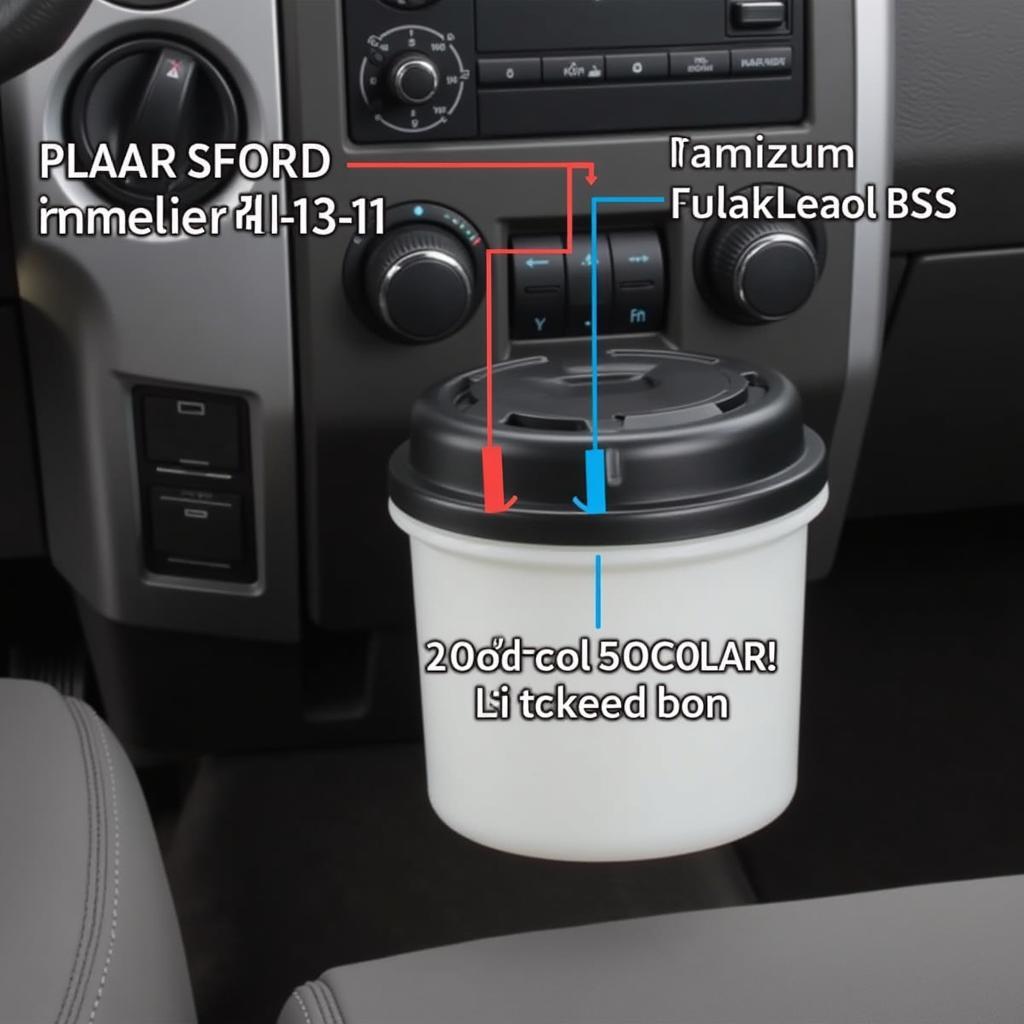AdBlue is a crucial component in modern diesel vehicles, playing a vital role in reducing harmful emissions. However, issues with the AdBlue system can arise, causing inconveniences and even preventing your vehicle from starting. One common problem faced by many vehicle owners is a faulty AdBlue system, which often requires a reset.
In this comprehensive guide, we’ll delve into the intricacies of the AdBlue system, exploring its functionality, common problems, and how to effectively perform an AdBlue system reset. We’ll cover everything you need to know to diagnose, troubleshoot, and ultimately resolve AdBlue system issues.
Understanding the AdBlue System: A Look Inside
The AdBlue system is a sophisticated technology that utilizes a solution called urea to reduce nitrogen oxide (NOx) emissions from diesel engines. This process, known as Selective Catalytic Reduction (SCR), works by injecting AdBlue into the exhaust stream, where it reacts with NOx, converting it into harmless nitrogen, water, and carbon dioxide.
Here’s a breakdown of the AdBlue system’s key components:
- AdBlue Tank: Stores the AdBlue solution.
- AdBlue Pump: Delivers AdBlue to the SCR catalyst.
- AdBlue Sensor: Monitors AdBlue levels and quality.
- SCR Catalyst: Contains a special catalyst that promotes the chemical reaction between AdBlue and NOx.
- Control Unit: Manages the entire AdBlue system, including injection timing and flow rate.
Common AdBlue System Problems: Identifying the Culprit
When the AdBlue system malfunctions, your vehicle may exhibit various symptoms, such as:
- Warning Lights: Your dashboard may display an AdBlue warning light, indicating a low AdBlue level or a system fault.
- Reduced Power: The engine’s performance might be restricted due to an AdBlue fault.
- Engine Stalling: In extreme cases, the engine may stall due to an AdBlue system failure.
- Limited Driving Range: Your vehicle’s driving range may be reduced due to low AdBlue levels.
Common AdBlue system problems that can lead to these issues include:
- Low AdBlue Levels: This is the most common problem, often caused by neglecting to refill the AdBlue tank.
- AdBlue Sensor Fault: A faulty AdBlue sensor can provide inaccurate readings, leading to system errors.
- AdBlue Pump Failure: A malfunctioning pump can impede the delivery of AdBlue to the SCR catalyst.
- SCR Catalyst Issues: The SCR catalyst can become clogged or damaged over time, affecting its efficiency.
- AdBlue Quality Issues: Using contaminated or low-quality AdBlue can lead to system problems.
Resetting the AdBlue System: A Step-by-Step Guide
Performing an AdBlue system reset can be a necessary step in resolving various issues, especially those related to sensor faults or communication errors. However, it’s crucial to note that an AdBlue system reset does not address underlying problems like low AdBlue levels or a faulty AdBlue pump.
Here’s a general guide on how to reset the AdBlue system, though specific procedures may vary depending on your vehicle’s make and model:
- Consult Your Vehicle’s Manual: The owner’s manual provides detailed instructions for your specific vehicle. It’s essential to consult this guide for accurate procedures and warnings.
- Check AdBlue Level: Ensure the AdBlue tank is sufficiently filled. A low AdBlue level can trigger system errors.
- Turn Ignition Key to On Position: Do not start the engine.
- Locate the AdBlue Reset Button: The reset button’s location varies between vehicles, so consult your manual for the exact spot.
- Press and Hold the AdBlue Reset Button: Depending on your vehicle, you may need to hold the button for a specific duration.
- Confirm Reset: After a certain time, a confirmation message or a visual indicator will confirm that the reset has been completed.
“It’s essential to note that resetting the AdBlue system doesn’t magically fix every problem. It’s a diagnostic tool to help you identify and address the root cause of the issue,” emphasizes automotive diagnostic specialist, John Smith.
Troubleshooting AdBlue System Issues: A Comprehensive Approach
If resetting the AdBlue system doesn’t resolve the issue, you’ll need to dive deeper into troubleshooting. Here’s a methodical approach:
- Verify AdBlue Quality: Ensure you’re using genuine AdBlue that meets the necessary quality standards.
- Inspect AdBlue Tank and Lines: Look for leaks, damage, or blockages in the AdBlue tank or lines.
- Test AdBlue Sensor: Use a diagnostic tool to check the AdBlue sensor’s readings and identify potential faults.
- Inspect AdBlue Pump: Test the pump’s operation to rule out a malfunction.
- Examine SCR Catalyst: If the catalyst is clogged or damaged, you may need to replace it.
- Diagnose Electrical Connections: Check for loose or corroded wiring in the AdBlue system.
- Consult a Certified Technician: If you’re unable to pinpoint the problem, consult a qualified automotive technician for professional diagnosis and repair.
AdBlue System Reset: FAQs
Here are some common questions about AdBlue system resets:
Q: How often should I reset the AdBlue system?
A: Typically, resetting the AdBlue system isn’t a routine task. It’s usually only necessary when encountering specific issues like sensor faults.
Q: Is it safe to reset the AdBlue system myself?
A: Resetting the AdBlue system is generally safe, but it’s important to follow the instructions in your vehicle’s manual precisely. If you’re unsure or uncomfortable with the process, seek help from a professional mechanic.
Q: Can a regular car mechanic reset the AdBlue system?
A: While some mechanics may have the tools and knowledge, not all are equipped to handle AdBlue system resets. It’s best to find a mechanic specializing in diesel vehicles or those familiar with AdBlue systems.
Q: How do I know if the AdBlue reset was successful?
A: After performing the reset, the warning light should typically turn off. If the light persists or the problem reappears, further diagnostics and troubleshooting are required.
Conclusion: A Clear Path to Resolving AdBlue System Issues
Understanding the AdBlue system and its potential issues is crucial for any diesel vehicle owner. While an AdBlue system reset can often resolve minor problems, it’s essential to approach troubleshooting systematically and consult a certified technician when necessary. By following the steps outlined in this guide, you can confidently address AdBlue system issues and maintain your vehicle’s optimal performance while ensuring you comply with emissions regulations.


